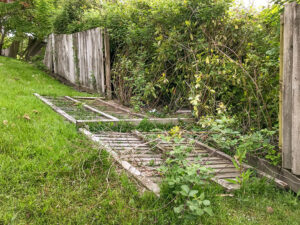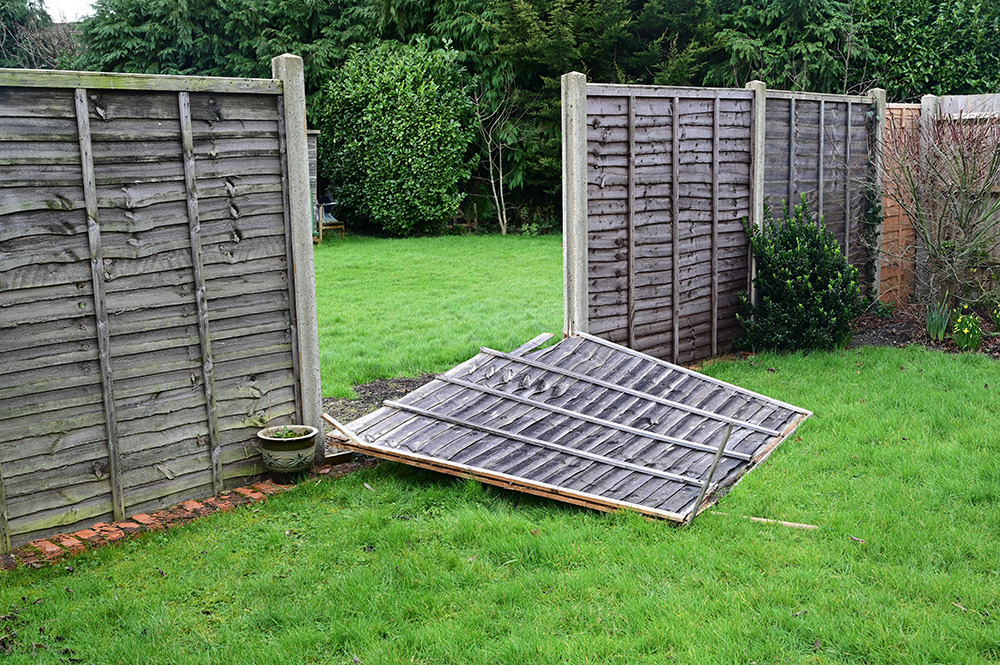How to Protect Your Fence in High Winds
The UK has faced strong winds recently and frequent storms that have lead to thousands of damaged fences. Strong winds, in particular, can wreak havoc on fences, leaving homeowners grappling with costly repairs or replacements. However, with the right precautions and maintenance strategies, you can increase the chances of your fence surviving a heavy storm or strong winds. In this guide, we’ll delve into essential tips to safeguard your fence during storms, from reinforcing with concrete gravel boards to selecting robust fence panels and ensuring secure foundations.
- Understanding the Threat:
Before diving into protective measures, it’s crucial to comprehend the potential damage storms can inflict on fences. High winds, heavy rain, and flying debris pose significant risks, causing panels to buckle, posts to lean, or even entire sections to collapse. By acknowledging these threats, you can proactively address vulnerabilities in your fence’s design and construction. - Reinforce with Concrete Gravel Boards:
Concrete gravel boards serve as a formidable barrier between the ground and your fence panels, offering protection against moisture, rot, and ground movement. Installing gravel boards beneath the fence panels helps elevate them, preventing direct contact with soil and minimising the risk of water absorption. Moreover, the weight and stability of concrete gravel boards enhance the fence’s resistance to wind uplift, anchoring it firmly in place during storms. - Choose Strong Fence Panels:
When it comes to withstanding stormy weather, not all fence panels are created equal. Opt for robust materials such as pressure-treated timber known for their durability and longevity. Here at Oakdale Fencing we offer a variety of high quality strong fence panels, including tongue and groove as well as feather edge. - Dig Deep Holes for Concrete:
The foundation of any sturdy fence lies in its posts, and proper installation is essential to its resilience in stormy conditions and strong winds. When setting posts, dig holes to a sufficient depth to ensure adequate stability, typically at least one-third of the post’s length. This allows for proper anchoring in the soil, preventing leaning or toppling during strong winds. Incorporating concrete into the post holes further reinforces their stability, creating a solid foundation that can withstand the forces exerted by storms. If you want to go even further, we recommend using concrete fence posts to help strengthen your fence. - Regular Maintenance and Inspections:
Prevention is key to safeguarding your fence against storm damage. Implement a routine maintenance schedule to inspect for signs of wear, deterioration, or loose components. Replace any damaged or weakened sections promptly, reinforcing connections and tightening fasteners as needed. Additionally, trim overhanging branches and plants that could potentially damage the fence during high winds. By staying proactive, you can address issues before they escalate into costly repairs or replacements. Rotten fence panels aren’t as strong and can be easily blown down in a storm. - Secure Loose Items:
In preparation for an impending storm, take proactive measures to secure loose items in your yard that could become airborne projectiles. Store outdoor furniture, garden tools, and decorative ornaments in a safe location or anchor them securely to the ground. By minimising potential hazards in your garden, you reduce the risk of these objects causing damage to your fence or neighbouring properties during severe weather events.
Protecting your fence in a storm requires foresight, preparation, and proactive maintenance. By reinforcing with concrete gravel boards, selecting strong fence panels, digging deep holes for concrete, and implementing regular inspections, you can fortify your fence against the forces of nature. Remember, investing in preventative measures today can save you from costly repairs tomorrow, ensuring your fence remains standing strong through any storm that comes its way.








